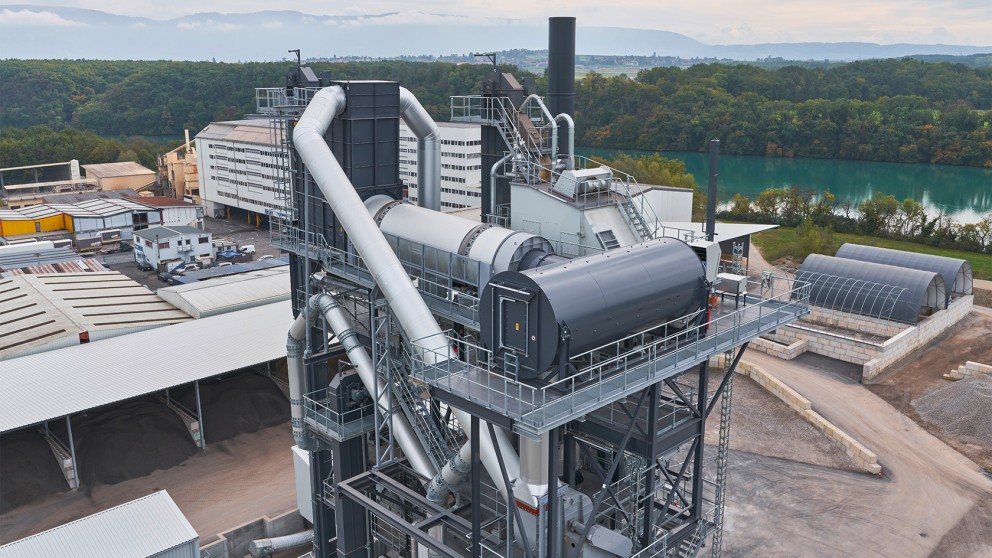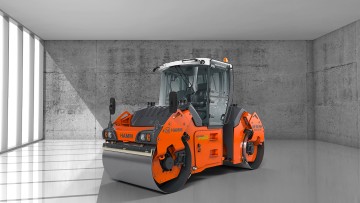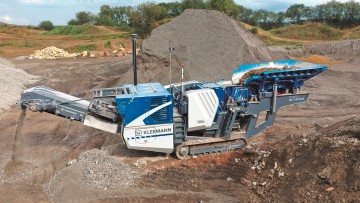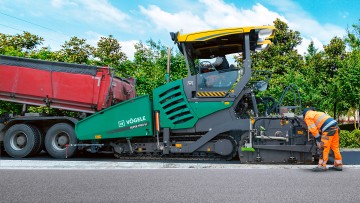

The path to climate-neutral road construction
Machine manufacturers and construction companies around the globe are currently searching for ways to achieve the ultimate goal of climate-neutral construction. The challenge here is to successively reduce CO₂ emissions as well as other harmful gases (expressed as a CO₂ equivalent: CO₂e) to zero globally over the coming decades. In the road construction sector, this transformation is inextricably linked to the improvement and further development of production and working processes. In the future, machines and construction materials will also be assessed on the basis of the climate-harmful emissions arising from their production and use. The focus is, however, not on individual machines, but on the entire process leading up to the finished product – a road. Ultimately, it is the emissions generated per mile of newly built or rehabilitated road – CO₂e per unit of work done – that are decisive.
Sustainable development goals
In 2015, the United Nations adopted Agenda 2030. With the agenda, the global community aims not only to enable people on all continents to live a life in dignity but also to sustainably conserve vital natural resources. Economic, ecological, and social aspects all play a critical role in this. Governments around the world, civil society, and private enterprise are called upon to make a contribution to the realisation of the Sustainable Development Goals set out in Agenda 2030.
Sustainability targets in the road construction sector
The construction industry already faces specific on-site requirements with respect to the use of non-fossil fuels or the deployment of machines with local zero emissions – in the Nordic nations, for instance. In the light of this and their obligations to future generations, many leading players in the construction sector and numerous small and mid-size companies are currently setting their own goals to mitigate climate change.
The Greenhouse Gas Protocol
The Greenhouse Gas (GHG) Protocol has established itself globally as a holistic calculation method for CO₂e emissions. In a similar way to business accounting, it enables companies and institutions to systematically determine their emissions with harmful effects on the climate and to identify their sources.

As a manufacturer of road construction machines, the Wirtgen Group has also set itself concrete goals, broken down into specific steps. For example, Wirtgen, Vögele, Hamm, and Kleemann will further increase the availability of machines powered by hybrid or fully electric drive systems by 2026. In addition, all Wirtgen Group product brands, including Benninghoven, will offer machines and plants that can be operated with non-fossil or climate-neutral fuels. Last but not least, the digitalisation of machines will make a significant contribution to process optimisation and, in turn, lead to a further reduction of harmful emissions.

Benninghoven asphalt mixing plant with a hot gas generator for the production of asphalt from up to 100% milled material.
The goal: sustainable reduction of emissions
The ultimate goal of all these measures is a considerable reduction in the carbon footprint of Wirtgen Group machines, plants, and systems by 2030. In concrete terms, the aim is to reduce scope 1 and scope 2 emissions by over 50%. For scope 3, we plan to reduce upstream and downstream emissions by at least 30%. These primarily include the emissions from machines throughout their service life and, for example, emissions arising along the supply chain. To this end, John Deere, the parent company of the Wirtgen Group, has joined the Science Based Targets initiative (SBTi) and has had its own goals assessed and validated.
In order to achieve the greatest possible reduction in overall emissions, it is essential to focus the efforts of all players across the road construction industry. The key question we must ask ourselves is: How can we construct or rehabilitate roads with minimal or zero harmful emissions?
The CECE 4-pillars approach
CECE is a pan-European organisation representing construction machine manufacturers and related industries They have identified 4 areas in which CO₂e emissions can be reduced: (Source: CECE )

A holistic approach that takes all aspects of road construction into consideration is essential in order to achieve maximum reduction of CO₂e emissions. As the pan-European organisation representing construction machine manufacturers and related industries, the CECE has already proposed a number of courses of action. Considerable savings potential can be leveraged by further improving machine efficiency, by optimised construction processes and procedures, and by means of more-efficient operating concepts. At the same time, alternative, non-fossil fuels and electric drive systems can play an important role on the road to climate neutrality.
The CECE 4-pillars approach
Smart assistance systems and alternative energy sources
The Wirtgen Group has already developed numerous solutions over the years to significantly reduce fuel consumption. These include intelligently-designed drive systems and efficiency-optimised controls. One example of this is the Wirtgen ”Mill Assist”: an assistance system for cold milling machines that automatically adjusts to meet the performance and quality requirements entered by the machine operator and consistently guarantees the most favourable balance between milling performance and operating costs. This simultaneously reduces diesel fuel consumption and minimises pick wear. Another example is the Dash 5 generation of road pavers from Vögele, which feature environmentally-friendly machine technologies that also ensure lower fuel consumption.
Machines from Wirtgen, Vögele, Hamm, and Kleemann whose engines fulfil the requirements of the US EPA Tier 4f exhaust emission standard or EU Stage V can already be powered by alternative fuels. They are approved for use with alternative paraffinic fuels such as HVO (Hydrotreated Vegetable Oils – fuels on the basis of vegetable oils or animal fats) or XtL fuels (X-to-Liquid – synthetic fuels on the basis of solid, liquid, or gaseous energy resources). There are already corresponding solutions for asphalt mixing plants from Benninghoven. These can be fuelled with wood dust or BtL (Biomass-to-Liquid – liquid fuels derived from biomass).





